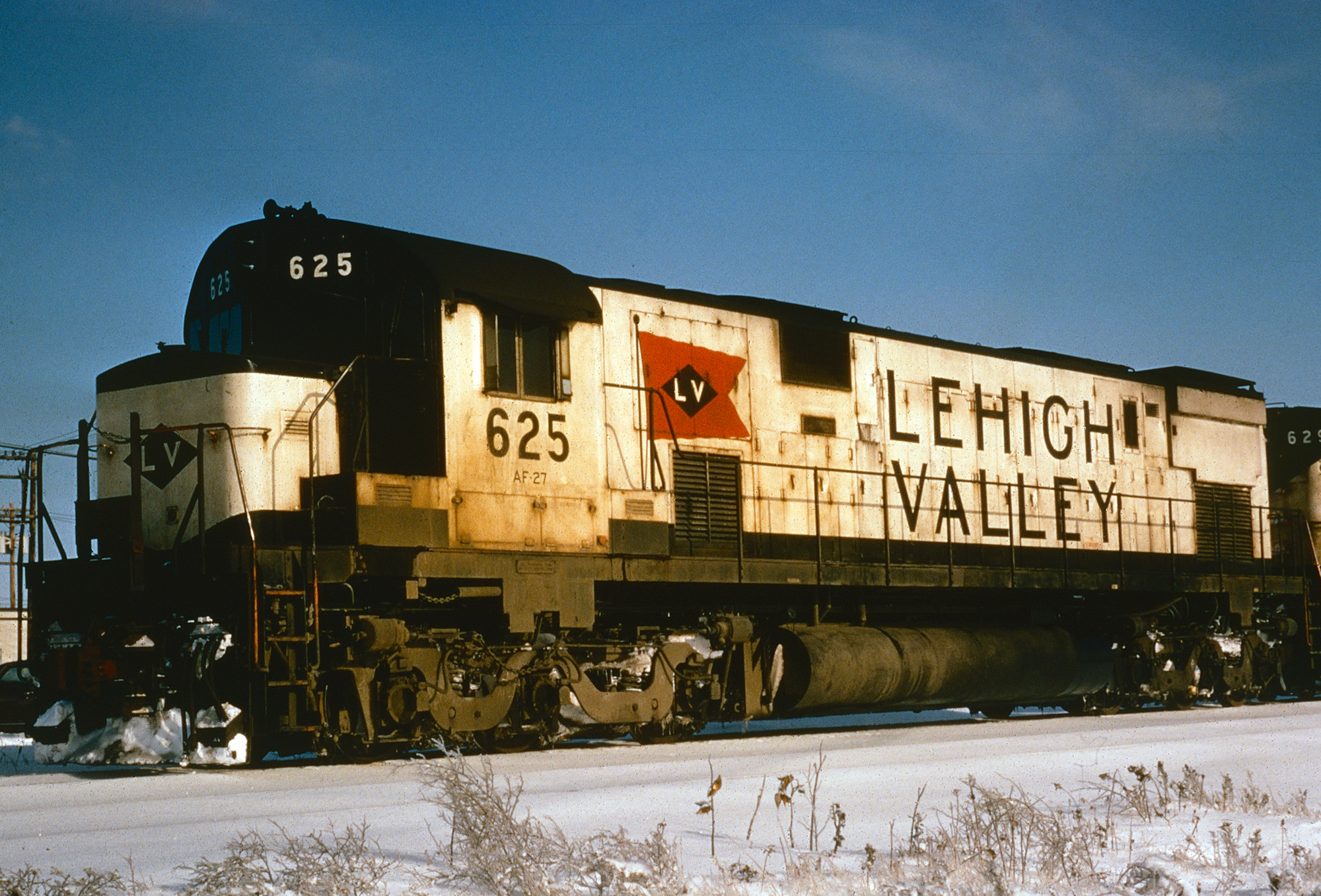Alco "C628" Locomotives: Roster, Data Sheet, Specs
Last revised: February 24, 2024
By: Adam Burns
The C628 was Alco's first in its line of six-axle, C-C road
switchers. Overall these behemoths were as powerful as they appeared,
which is perhaps ironically a significant reason why the American
Locomotive Company (Alco) did not sell more of its six-axle Century
line.
Perhaps most unfortunate was that Alco missed the high horsepower, six-axle market by just a few years as in the early 1970s GM's Electro-Motive Division released its SD40 series which to this day remains one of the most popular locomotive designs ever conceived.
In any event, the C628 would prove to be Alco's most successful six-axle Century, selling nearly 200 units.
Today, there are three C628's known to exist although none are located within the United States; Delaware & Hudson Railway #610 is located at the Yucatan Railroad Museum in Mexico along with Ferrocaril del Pacifico #606.
Additionally, Hammersly Iron #2000 is preserved by the Pilbara Railway Historical Society of Australia.
Photos
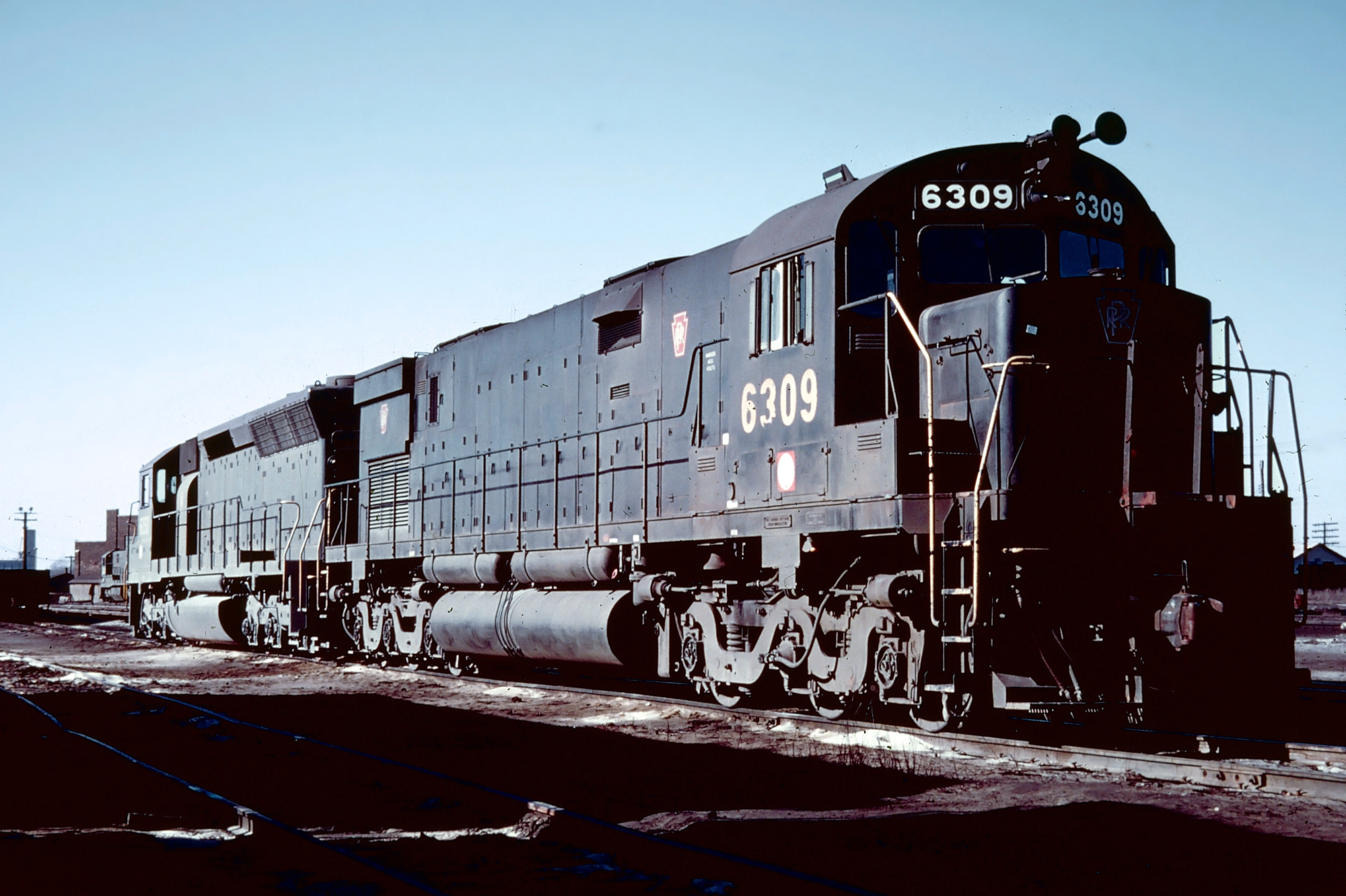 Pennsylvania C628 #6309 and SD45 #6150 between assignments in Toledo, Ohio on March 30, 1967. Harry Juday photo. American-Rails.com collection.
Pennsylvania C628 #6309 and SD45 #6150 between assignments in Toledo, Ohio on March 30, 1967. Harry Juday photo. American-Rails.com collection.Overview
To counter GE’s new locomotive model, the Universal series, Alco debuted its Century series in the early 1960s. Once again, the Schenectady manufacturer was scrambling to try and keep up with the competition, which in the world of business is a very bad situation to find oneself in.
While GE's "U-Boats" were not that particularly successful either, given that EMD was not only the most trusted builder at the time but also releasing models that were simply far superior to everyone else, the one-time Alco ally was selling more of them than the Centuries.
The first of Alco's six-axle, C-C models was the C628; a powerful, clean design that unfortunately was much more successful with railfans (and still is) than railroads.
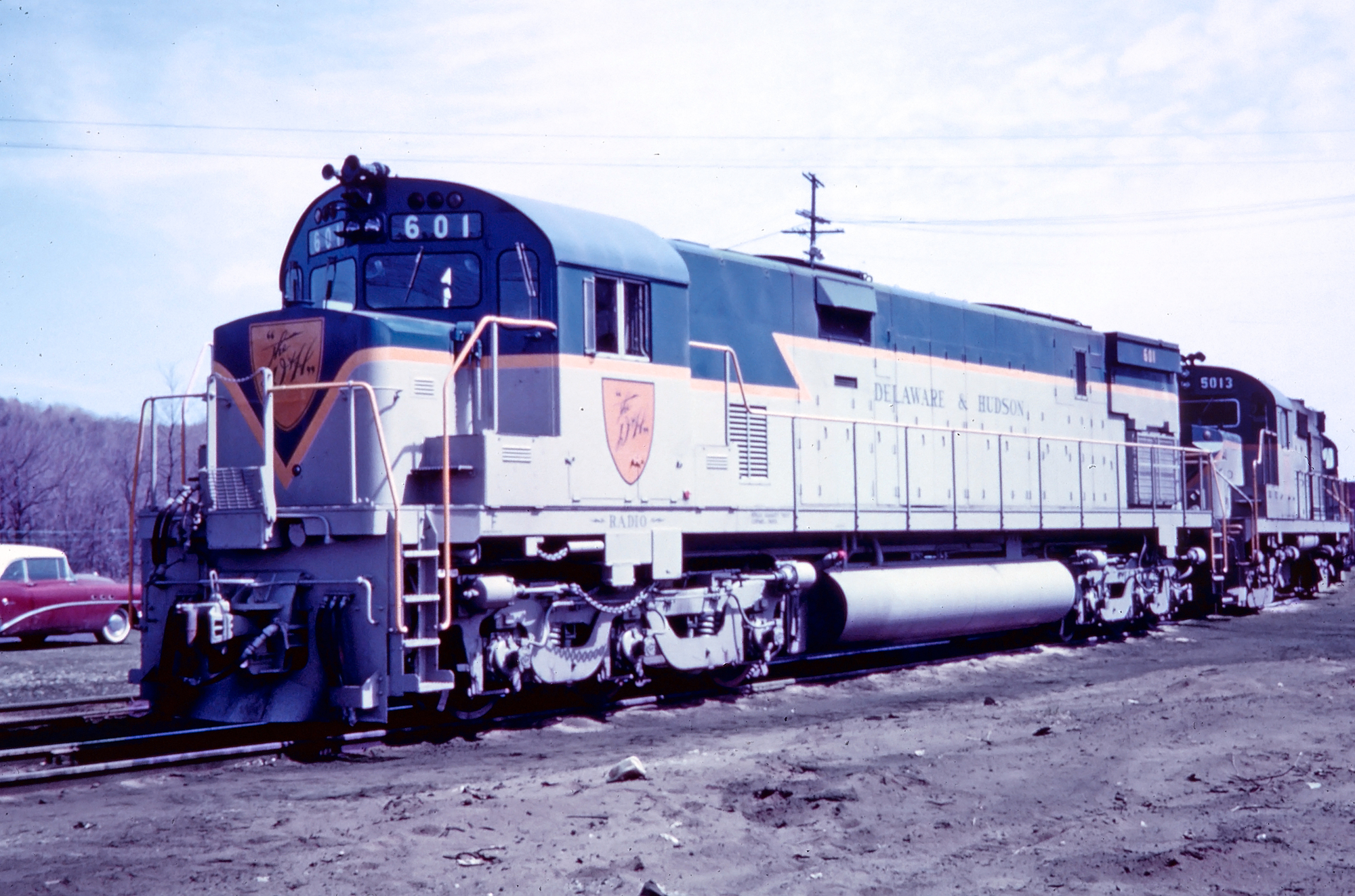 Recently delivered Delaware & Hudson C628 #601 is seen here at the road's terminal in Mechanicville, New York in March, 1964. American-Rails.com collection.
Recently delivered Delaware & Hudson C628 #601 is seen here at the road's terminal in Mechanicville, New York in March, 1964. American-Rails.com collection.The Century series also brought out a new numbering system by Alco, replacing the straightforward symbols from before (“RS” for road-switcher, “PA” for passenger and A-unit, etc.) with letters and digits, something roughly similar to Baldwin’s numbering system.
With the C628, “C”, of course, stood for Century series, “6” was the axle number, and the last two digits were the horsepower rating. The Alco C628 debuted in late 1963 as a replacement for the builder's RSD-15 line.
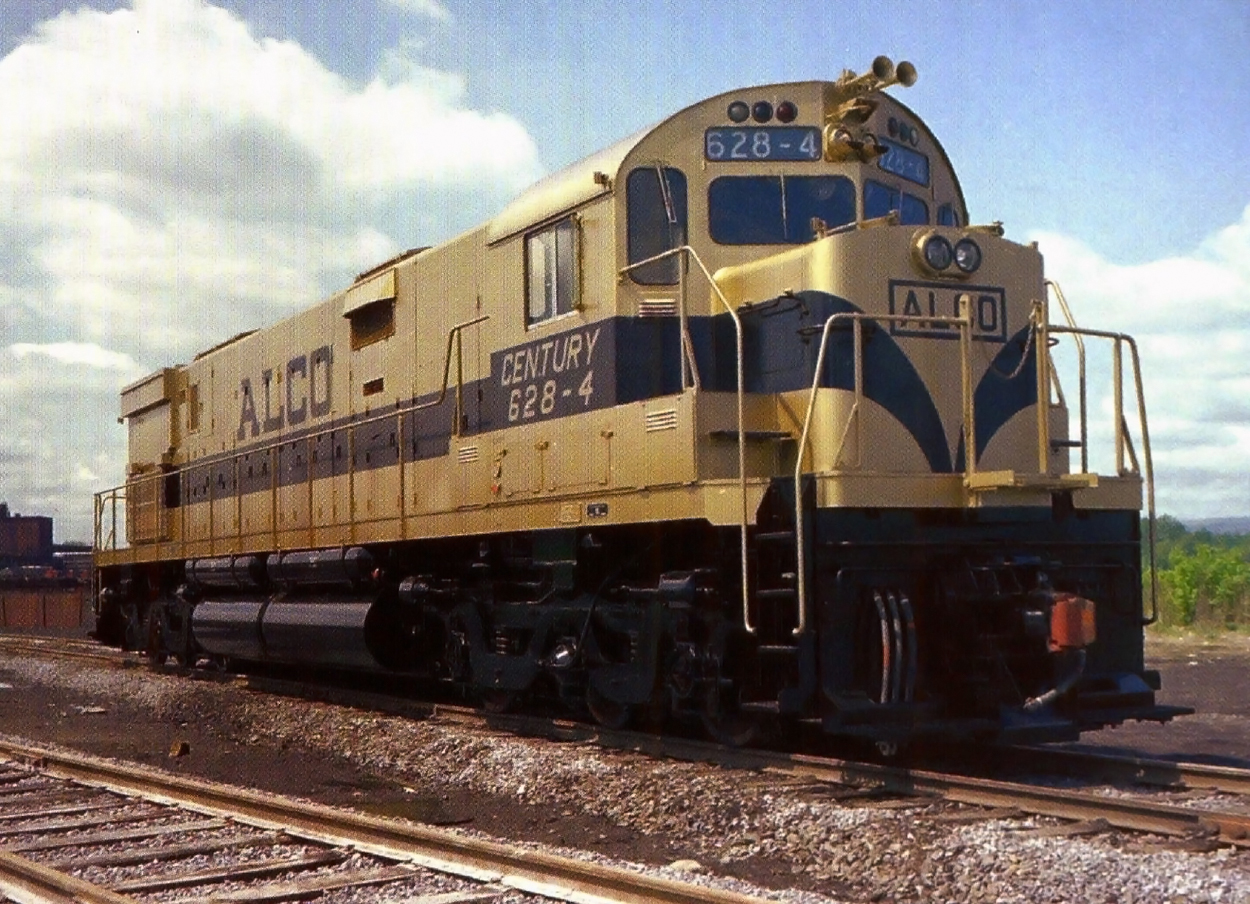 A company photo of C628 demonstrator #628-4, seen here at Alco's famous plant in Schenectady, New York during 1964. The manufacturer built four C628 demonstrators, #628-1 through #628-4; all were purchased by Southern Pacific.
A company photo of C628 demonstrator #628-4, seen here at Alco's famous plant in Schenectady, New York during 1964. The manufacturer built four C628 demonstrators, #628-1 through #628-4; all were purchased by Southern Pacific.Reception
Using Alco's tried in proven 251C model prime mover the C628 was rated at 2,750-2,800 horsepower and it, along with its successors became legendary for their ability to pull serious tonnage.
Unfortunately, as powerful as they were railroads came to dislike them
since they caused significant wear to the track structure.
This was particularly true for the Monon, which only used their C628s for a few years before selling the units. Ultimately, Alco sold fewer six-axle Centuries than it probably could otherwise have.
Still, through the end of production in 1968 the C628 sold relatively well for the Century line producing 186 units for several Class I systems such as:
- Atlantic Coast Line (11)
- Louisville & Nashville (15)
- Delaware & Hudson (18)
- Lehigh Valley (8)
- Monon (9)
- Norfolk & Western (30)
- Pennsylvania (15)
- Southern Pacific (25)
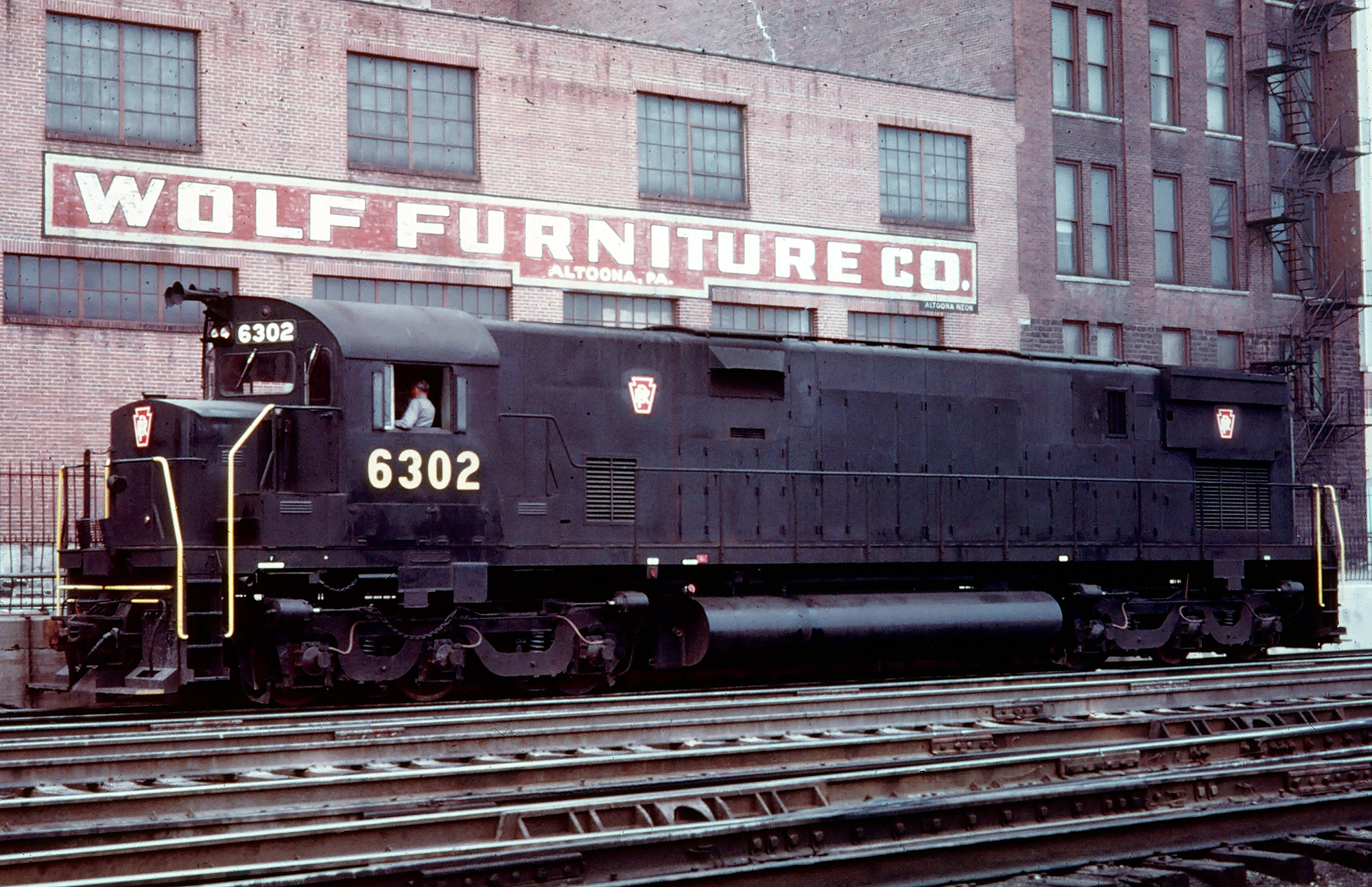 A big Pennsylvania Railroad C628, #6302, at Altoona, Pennsylvania; June, 1965. Fred Byerly photo. American-Rails.com collection.
A big Pennsylvania Railroad C628, #6302, at Altoona, Pennsylvania; June, 1965. Fred Byerly photo. American-Rails.com collection.Additionally, Australian firm Hammersley Iron purchased five, Ferrocaril del Pacifico picked up ten, and its Mexican counterpart National Railway of Mexico purchased 32. Alco also built four demonstrators, #628-1 to #628-4 all of which were picked up by the Southern Pacific.
Just as the builder would experience with its four axle Centuries most of the buyers for its C-C designs would be railroads already loyal to the company like the Lehigh Valley, D&H, and N&W as it could attract little new interest after early reliability issues continued to hamper sales.
 This closeup view of Lehigh Valley C628 #625 was taken of the unit at Bethlehem, Pennsylvania on August 5, 1974. The LV owned eight of these units, numbered 625-632. Doug Kroll photo.
This closeup view of Lehigh Valley C628 #625 was taken of the unit at Bethlehem, Pennsylvania on August 5, 1974. The LV owned eight of these units, numbered 625-632. Doug Kroll photo.Strangely, even after GE entered the locomotive market itself and competed directly against Alco the company continued to purchase internal components from them.
Perhaps most ironic was that components, like GE's model GT586A4 main generator, could be found in both Century and Universal models.
The C628 up to that time offered the most starting (85,750 pounds) and continuous tractive effort (79,500 pounds) of any locomotive in its class, which is a significant reason why some railroads really liked them.
Data Sheet and Specifications
| Entered Production | 12/19/1963 (Atlantic Coast Line #2000) |
| Years Produced | 12/19/1963-12/1968 |
| Model Specification | DL628 |
| Engine | 251C, V-16 |
| Horsepower | 2,750 |
| RPM | 1,050 |
| Carbody Styling | Alco |
| Length (Between Coupler Pulling Faces) | 69' 6" |
| Weight | 342,000 Lbs. (Optional ballasting available up to 408,000 Lbs.) |
| Dynamic Brakes | Optional |
| Trucks | C-C |
| Truck Type | Trimount |
| Truck Wheelbase | 12' 6" |
| Wheel Size | 40" |
| Traction Motors | GE 752 (6) |
| Traction Generator | GT586 |
| Gear Ratio | 74:18 (65 MPH), 81:22 (75 MPH) |
| Tractive Effort Rating | 79,500 Lbs. at 12 MPH |
| Top Speed | 75 MPH |
Production Roster
Total Built = 186
| Owner | Road Number(s) | Construction Number(s) | Completion Date |
|---|---|---|---|
| Alco (Demo) | 628-1 thru 628-4 (Became Southern Pacific #4870-4873) | S-3376-01 thru S-3376-04 | 5/1964 |
| Atlantic Coast Line | 2000-2003 | 84899-84902 | 12/19/1963 |
| Atlantic Coast Line | 2004-2010 | S-3393-01 thru S-3393-07 | 12/1964 |
| Chihuahua al Pacifico (Mexico) | 901-904 | S-3474-01 thru S-3474-04 | 12/1966 |
| Delaware & Hudson | 601-609 | S-3373-01 thru S-3373-09 | 3/1964-5/1965 |
| Delaware & Hudson | 610-618 | S-3407-01 thru S-3407-09 | 5/1965 |
| Ferrocarril Del Pacifico (Mexico) | 601-606 | S-3452-01 thru S-3452-06 | 4/1964-5/1964 |
| Ferrocarril Del Pacifico (Mexico) | 607-610 | S-6001-01 thru S-6001-04 | 12/1968 |
| Hamersley Iron (Australia) | 2000-2002 | S-3415-01 thru S-3415-03 | 6/1965 |
| Hamersley Iron (Australia) | 2004-2005 | S-3482-01 thru S-3482-02 | 4/1967 |
| Lehigh Valley | 625-631 | S-3427-01 thru S-3427-07 | 11/1965 |
| Lehigh Valley | 632 | S-3476-01 | 1/1967 |
| Louisville & Nashville | 1400-1411 | S-3383-01 thru S-3383-12 | 7/1964-9/1964 |
| Louisville & Nashville | 1412-1414 | S-3406-01 thru S-3406-03 | 4/1965 |
| Monon | 400-408 | 84903-84911 | 3/1964 |
| Ferrocarriles Nacionales de México | 8300-8309 | S-3475-01 thru S-3475-10 | 12/1966-1/1967 |
| Ferrocarriles Nacionales de México | 8310-8321 | S-3496-01 thru S-3496-12 | 2/1968 |
| Ferrocarriles Nacionales de México | 8322-8331 | S-3495-01 thru S-3495-10 | 2/1968-3/1968 |
| Norfolk & Western | 1100-1109 | S-3429-01 thru S-3429-10 | 11/1965 |
| Norfolk & Western | 1110-1129 | S-3455-01 thru S-3455-20 | 4/1966 |
| Pennsylvania | 6300-6309 | S-3404-01 thru S-3404-10 | 3/1965 |
| Pennsylvania | 6310-6314 | S-3434-01 thru S-3434-05 | 11/1965-12/1965 |
| Southern Pacific | 4845-4873 (Ex-Demo's #628-1 thru #628-4) | S-3401-01 thru S-3401-25 | 3/1965-4/1965 |
Sources
- Foster, Gerald. A Field Guide To Trains. New York: Houghton Mifflin, 1996.
- Kirkland, John F. Diesel Builders, The: Volume Two, American Locomotive Company And Montreal Locomotive Works. Glendale: Interurban Press, 1989.
- Pinkepank, Jerry A. Diesel Spotter's Guide. Milwaukee: Kalmbach Publishing Company, 1967.
- Solomon, Brian. Alco Locomotives. Minneapolis: Voyageur Press, 2009.
Demonstrators
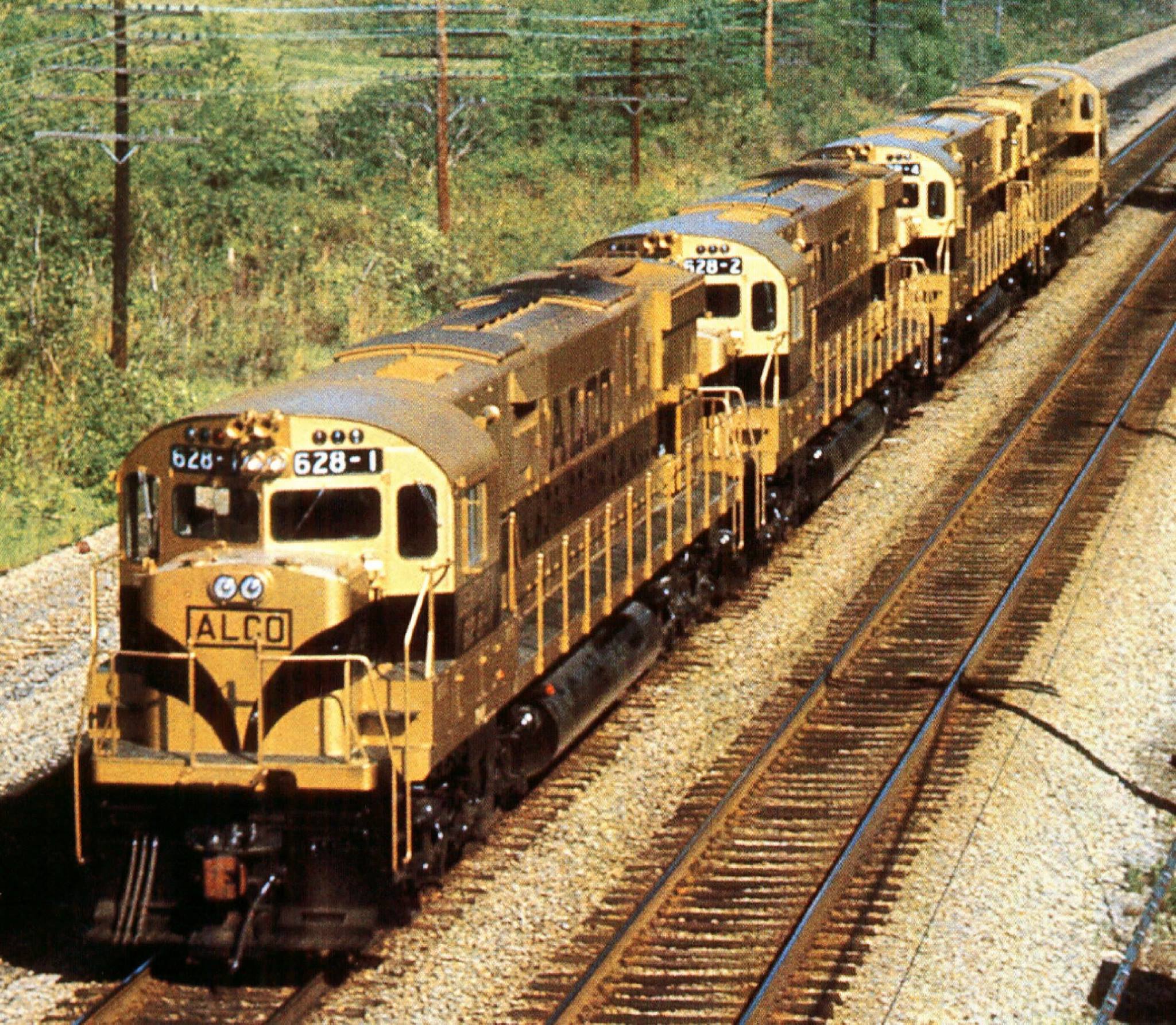 American Locomotive's four C628 demonstrators, #628-1 through #628-4, circa 1964. All would be purchased by Southern Pacific.
American Locomotive's four C628 demonstrators, #628-1 through #628-4, circa 1964. All would be purchased by Southern Pacific.This was especially the case with the Chicago & North Western, which purchased the N&W's 30 units in 1973 finding them quite useful employed in heavy ore service along its lines in northern Wisconsin and the UP of Michigan.
They last about 14 years on the C&NW before being retired in 1987. The carbody design of the C628 carried the standard Century look of a long, flush hood and short nose ahead of the cab.
The six-axle Centuries were massive locomotives, with the C628 weighing 204 tons and was more than 69-feet in length!
Recent Articles
-
Ohio - Murder Mystery - Dinner Train Rides
Dec 13, 25 10:14 AM
The murder mystery dinner train rides in Ohio provide an immersive experience that combines fine dining, an engaging narrative, and the beauty of Ohio's landscapes. -
Missouri's 'Wine Tasting' Train Rides
Dec 12, 25 04:13 PM
The fusion of scenic vistas, historical charm, and exquisite wines is beautifully encapsulated in Missouri's wine tasting train experiences. -
Minnesota's 'Wine Tasting' Train Rides
Dec 12, 25 04:07 PM
This article takes you on a journey through Minnesota's wine tasting trains, offering a unique perspective on this novel adventure.

